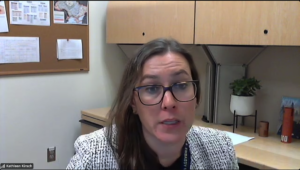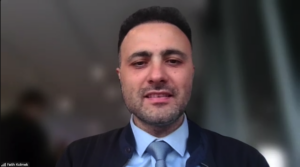The Distributed Energy Resources (DER) surge as an alternative to supply electricity to critical loads in the Ukrainian power grid and increase the reliability and resilience of the network. The deployment of DERs requires a strategy to coordinate the commissioning, optimize resources, standardize processes, follow a short-, medium- and long-term energy planning strategy, and accelerate the DER’s expansion across the country.
On November 9, the USAID Energy Security Project (ESP) conducted a kick-off meeting for the project that focuses on improving the resilience of power supply with distributed generation in Ukraine. It aims to improve security and continuously strengthen the resilience and effectiveness of the Ukrainian energy system.

In her opening speech, Kathleen Kirsch, Energy Team Lead of the Office of Economic Growth, USAID/Ukraine, emphasized the importance of distributed generation under current circumstances and mentioned that various solutions, including sustainable options, are being deployed. “I feel that increasing both the reliability of the power supply of critical customers as well as improving the flexibility to continue operating under different grid topologies is crucial in the current condition of continuous shelling. The microgrids and their different operation modes, such as grid-connected, island operation, and single machine island operation mode, seem to be a reasonable option to deploy distributed energy resources with different technologies, including but not limited to thermal and renewable resources as well as battery storage,” said Kathleen Kirsch.
The representative of the Ukrainian Distributing Grids (UDG), which carries out corporate management of state packages of shares of joint-stock companies that conduct activities in electric energy distribution, Artem Pasko, thanked USAID and its Energy Security Project for the support. “Our company includes six distribution system operators (DSOs) in different oblasts, which still fight for their grid future, and their power engineers work under missiles and drone attacks to make the energy system running. So during these challenging times, our priority for the coming years is to continuously improve power system’s security, resilience, and flexibility, increasing distributed generation and storage system to achieve energy security, save the energy workers and consumers,” underlined Artem Pasko.
Head of Technical and Production Services at Mykolaivoblenergo, Mykola Larin, expressed gratitude to USAID and all involved parties. “This is a good opportunity to resolve the ongoing problems caused by the Russian invasion of Ukraine in Mykolaiv Oblast and its grids,” said Mykola Larin.

Fatih Kolmek, USAID ESP Energy Sector Director, added that the team understands very well the challenges DSOs face now and assured that the technical study and methodological approach within the project “Improvement of the Resilience of Power Supply with Distributed Generation” will be applicable to DSOs in all oblasts.
The main part of the meeting was covered by the presentation from the MRC Group of companies, a subcontractor in this activity, which will propose a methodology for developing the technical and cost analysis of a microgrid in the Ukrainian power system. Gokhan Tosun, Director of Technology and Smart Energy, provided a detailed project implementation plan. “This is a very exciting project for us not only from the technical perspective but also as a pilot study that can be replicated in other oblasts and help Ukrainian citizens to cope with the extraordinary circumstances. So, we are glad to be part of this,” expressed Gokhan Tosun.
The “Improvement of the Resilience of Power Supply with Distributed Generation” project sets ambitious timelines that require a detailed plan to be achieved. Such plan was presented during the meeting:
1. Methodology and cost-analysis – development of a complex methodology that includes various parameters ranging from geospatial coverage to assessment of proposed region and analysis of technical parameters.
2. Conceptual design and technical specifications – a comprehensive outline of technical system requirements, performance standards, equipment specifications, technical documentation, evaluation criteria, etc.
“As a next step, the working groups will be established and will start working on the implementation of each phase of the project in sequence,” said Fatih Kolmek, summarizing the kick-off meeting.
